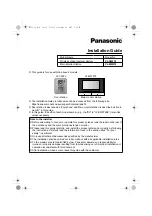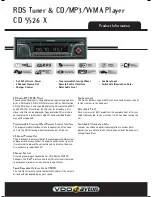
4
precipitate. Concentrations in excess of .05 ppm must be pre-treated with an iron remover
(concentrations > 2 ppm) or combination softener
*
(for iron concentrations < 2 ppm); otherwise
premature membrane and system equipment failure through iron deposit fouling will result.
•
Manganese:
Manganese is a commonly occurring mineral found in ground water. Manganese
will leave black, scaly deposits and will eventually foul membranes in concentrations greater than
.05 ppm. Manganese must be treated with a manganese greensand filter, regenerated with
potassium permanganate.
•
Hydrogen Sulfide:
Most commonly, hydrogen sulfide is known for its “rotten egg” odour. In
addition to having a objectionable odour, it is highly corrosive and will damage plumbing and
equipment. At lower concentrations (< 1 ppm) it can be removed with a Paterson Iron Remover
(air injection). At levels exceeding 1 ppm it will need to be treated with a manganese greensand
filter.
•
Nitrates:
The presence of nitrates in the water is usually an indicator for other problems with the
water source. Nitrates are a by-product of the decomposition of organic material that may include
sewage or run-off from septic systems. Surface runoff containing fertilizers will also be high in
nitrates. The source of the nitrates should be found and eliminated – feed water should be treated
with nitrate-selective ion exchange resins to reduce nitrates to < 5 mg/l.
•
Tannins and Lignin:
These are organic materials that are often contained in surface water and
shallow well water. Their origin is the natural decomposition of plant matter and tree barks,
leaving a brown colour ranging from a pale yellow to dark amber. Feed water tannins must be
pre-treated to levels < .5 mg/l to avoid membrane fouling. This is usually achieved through the
use of organic scavenging ion exchange resin (polystyrene or polyacrylic), regenerated with salt.
•
Chlorine:
Feed water should be free of chlorine (< .1 ppm), as TFC membranes are easily
damaged by chronic chlorine exposure. This is an important consideration when municipal water
is used as the feed water source. Pre-treatment by carbon filtration is very effective for chlorine
reduction – carbon eventually becomes exhausted and must be replaced to ensure continuous
filtration. If stabilized chlorine is present, size your carbon filter 2 to 3 times larger than for un-
stabilized chlorine to ensure removal. Consider installing a post-carbon filter test port for ease of
sampling.
•
Organic and Microbiological Activity:
Raw water sources, particularly surface water, often
contain algae and naturally occurring bacteria. Ground water may contain sulphur or iron
reducing bacteria or may be contaminated with other more dangerous strains of coliforms or
E.
coli.
These must be treated to avoid contamination or fouling of the pre- treatment systems or
membrane element(s).
•
pH:
Most membrane manufacturers recommend a pH range between 3.0 and 11.0 for the
membrane element. We recommend that the system operate at between 5.5 and 9.5, to minimize
the effects of extremely acidic or scale-forming water at either ends of the range. Extremes in
pH will be harder on your system, either causing premature.
*
When softeners are used for iron reduction, be sure to fit your softener with a resin bed cleaner to assist in
the flushing of iron deposits from the resin bed during backwashing and regeneration.






































